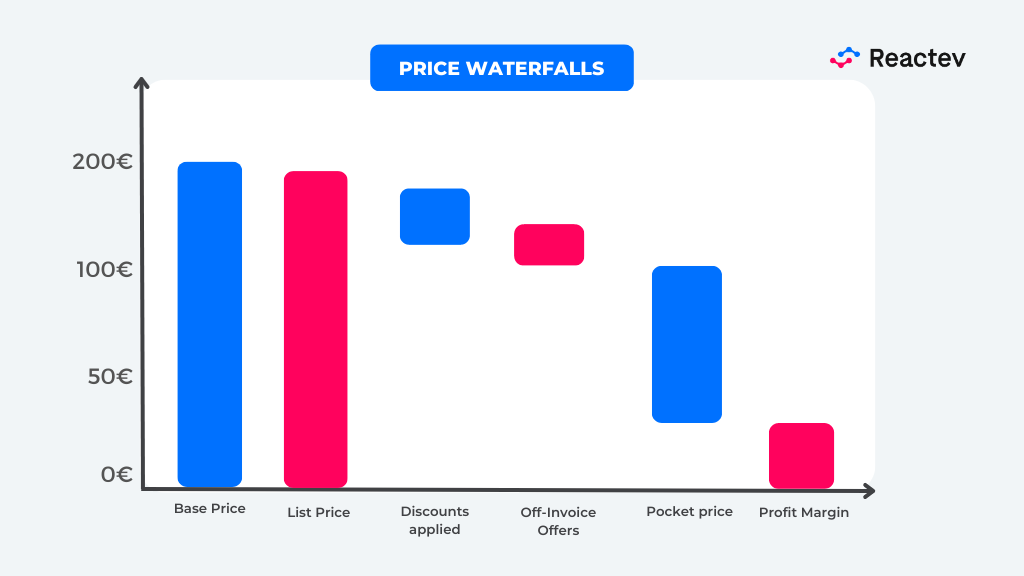
What are the key elements of price waterfalls?
05/09/2023 - Pricing strategy
To guarantee an effective price waterfall, you first need to define a series of levels for price changes. A price waterfall is a visual analysis method used to monitor the profitability of a pricing policy. It also helps to easily identify hidden costs associated with price changes, which arise from discounts or changes to a pricing strategy. However, before you can implement a price waterfall and boost price optimization, you need to establish the factors or levels that may affect the price of each product from the time to price is set all the way through until consumers complete the purchase.
Show the base price and discount applied
The levels or elements included in your price waterfall chart will depend on your eCommerce activity — there are infinite options — as many as you need. The aim is to identify the point at which higher losses are generated or profits start to be hit. Several basic conditions are almost always involved in pricing and should always be included in price waterfalls:
- Base Price — This is the starting point for most price waterfall charts. It is defined as the initial price the brand or retailer sets for any of the products or services in its catalogue. It is usually based on production costs, without taking into account other factors such as profit margin, currency exchange rates, discounts or sales, target markets, etc.
- List Price — This is the retail price set after analyzing the perceived value of each item and determining the expected profit margin. It is just a generic price used to launch a product onto the market, without tailoring it to each customer or applying discounts. For brands, this level can be the Manufacturer’s Suggested Retail Price (MSRP).
- Discounts applied — This includes any discount to the list price shown on the invoice. It tends to be for higher volume purchases, prompt payment for certain products and services or trade agreements, especially when it comes to B2B transactions.
- Off-Invoice Offers — These include discounts from the price not shown on the invoice. They tend to be discounts applied by eCommerce, exclusive discount codes or changes to purchase conditions, such as free shipping and returns. All these discounts can be broken down one by one in a price waterfall to check which is the most or least profitable.
- Pocket price — The pocket price is the list price less any discounts, sales, promotions, free shipping, and other such offers. It is the actual price that consumers will pay to the store.
Profit Margin — Also called pocket margin. This is the actual amount of money the company receives after deducting the direct and indirect costs from the transaction, i.e., the profit you have made from selling a product or service.

Over and above these factors, a company can include whatever levels it deems necessary in its price waterfall. For example, international eCommerce companies operating in multiple countries must localize prices based on currency exchange rates and to ensure prices are in line with the socio-economic level of each region.
You can then design your price waterfall chart to meet your business goals, collect and select data, and gain valuable insight into the profitability of your pricing strategy. Each of these prices, with their respective levels, can, in turn, be saved on pricing software. This software will help you adjust prices according to market needs whilst still protecting your profit margin. The ultimate goal of these pricing practices is to optimize your strategy to make it both attractive and efficient.
Category: Pricing strategy
